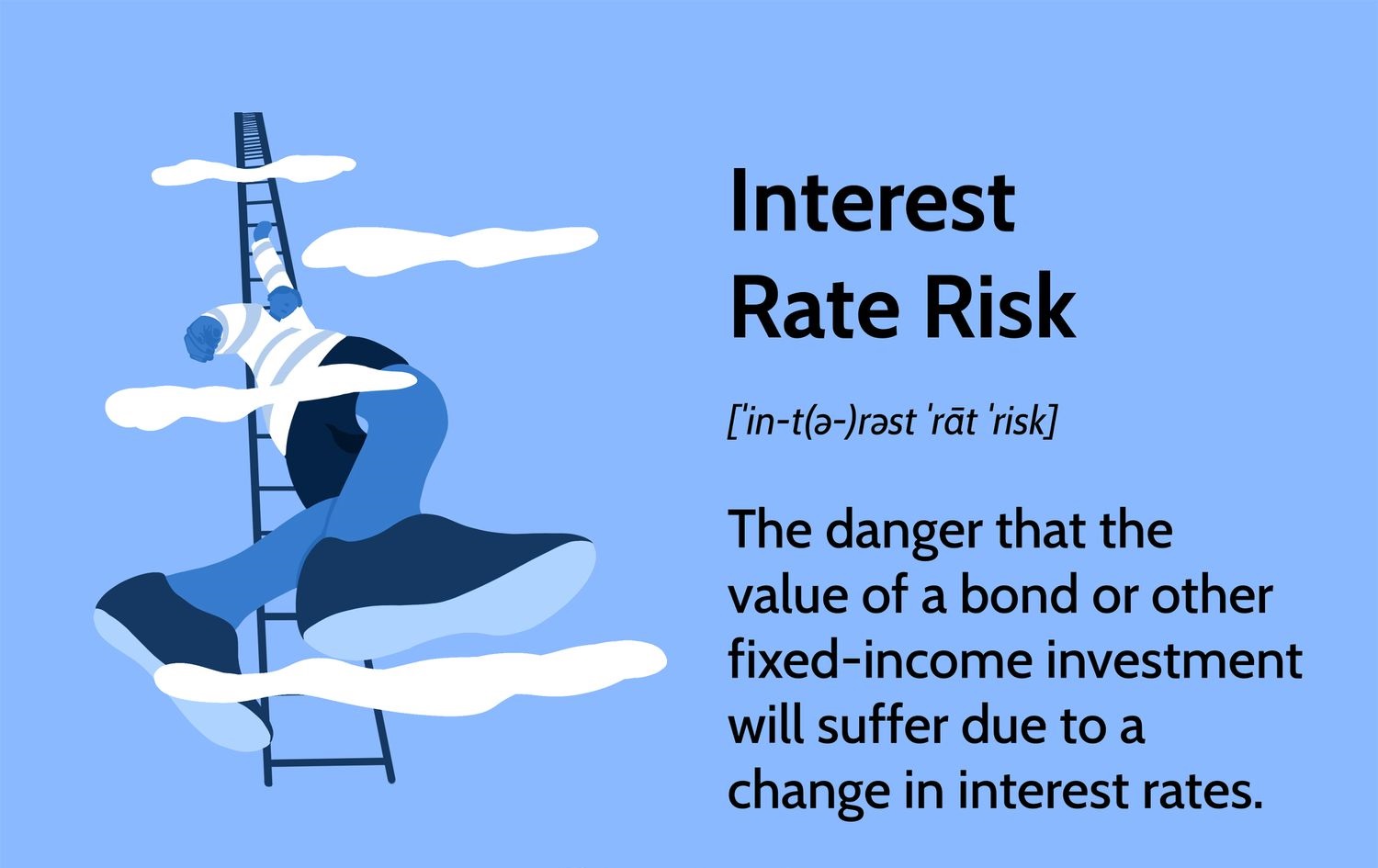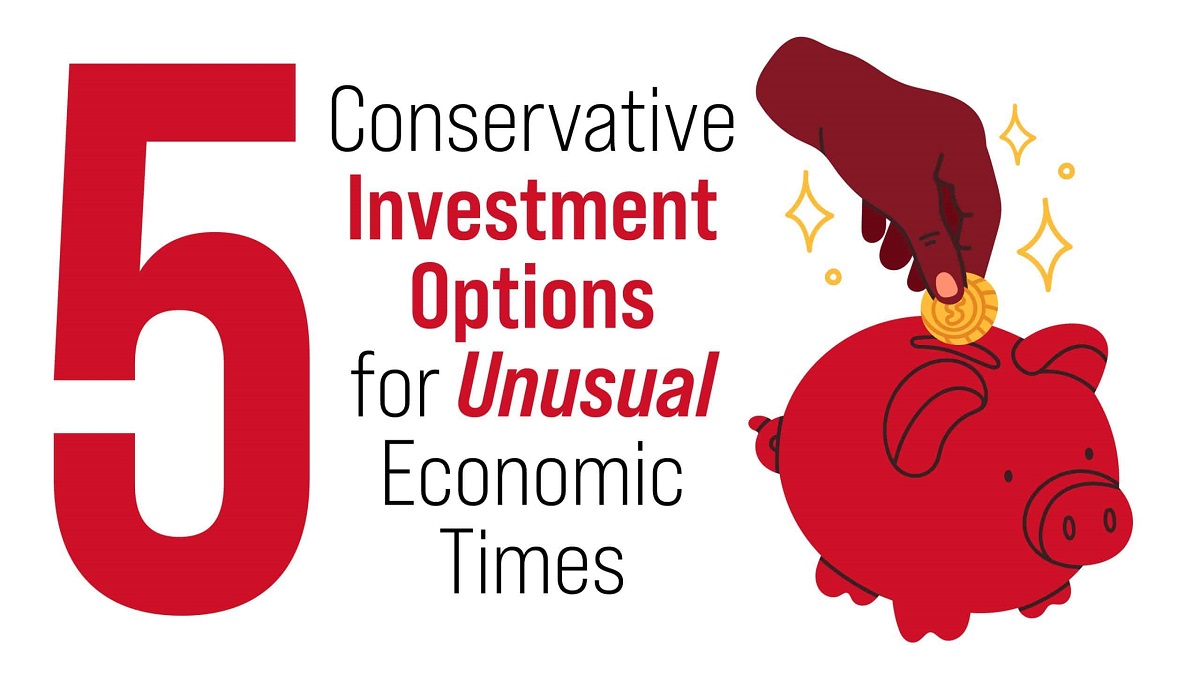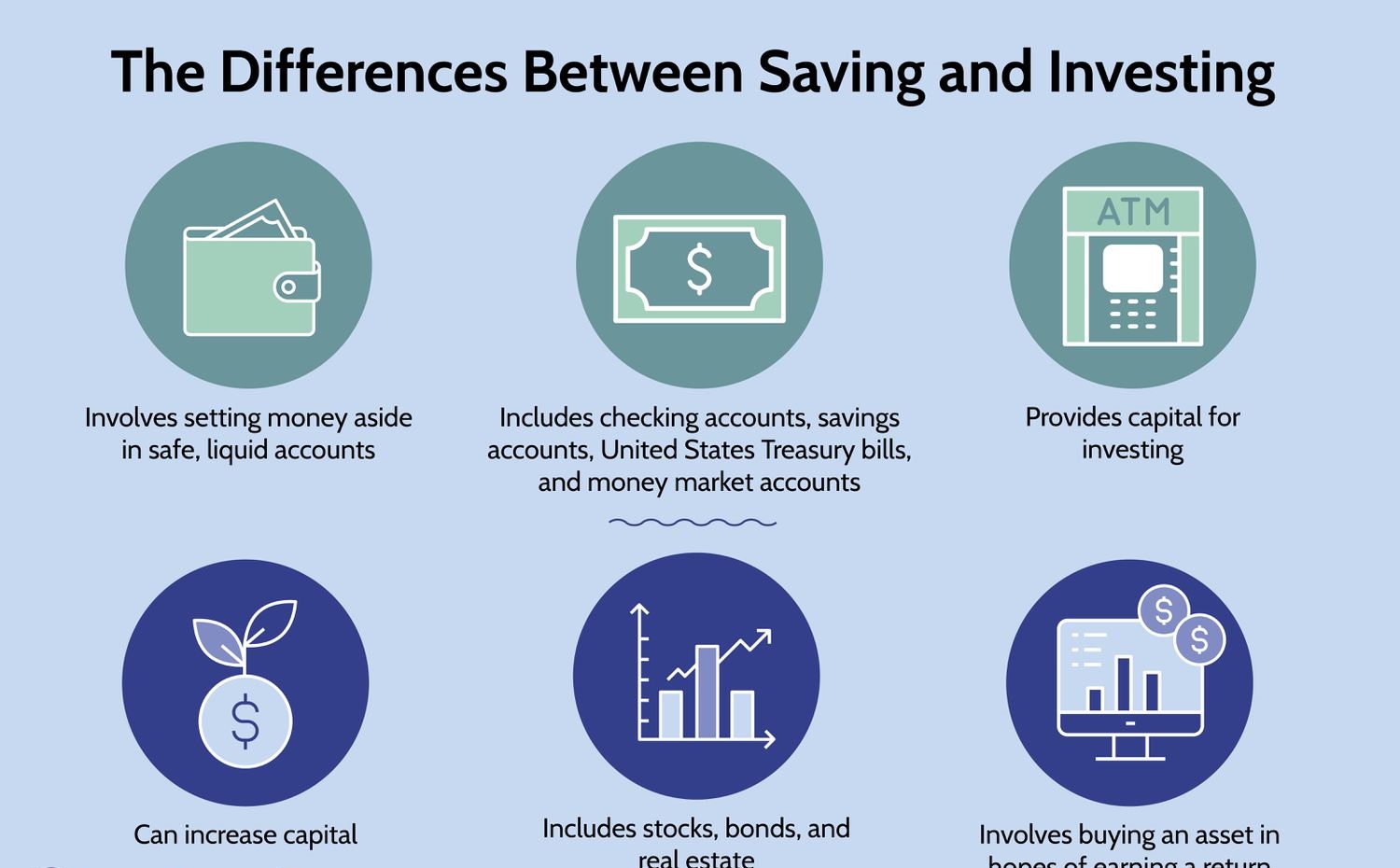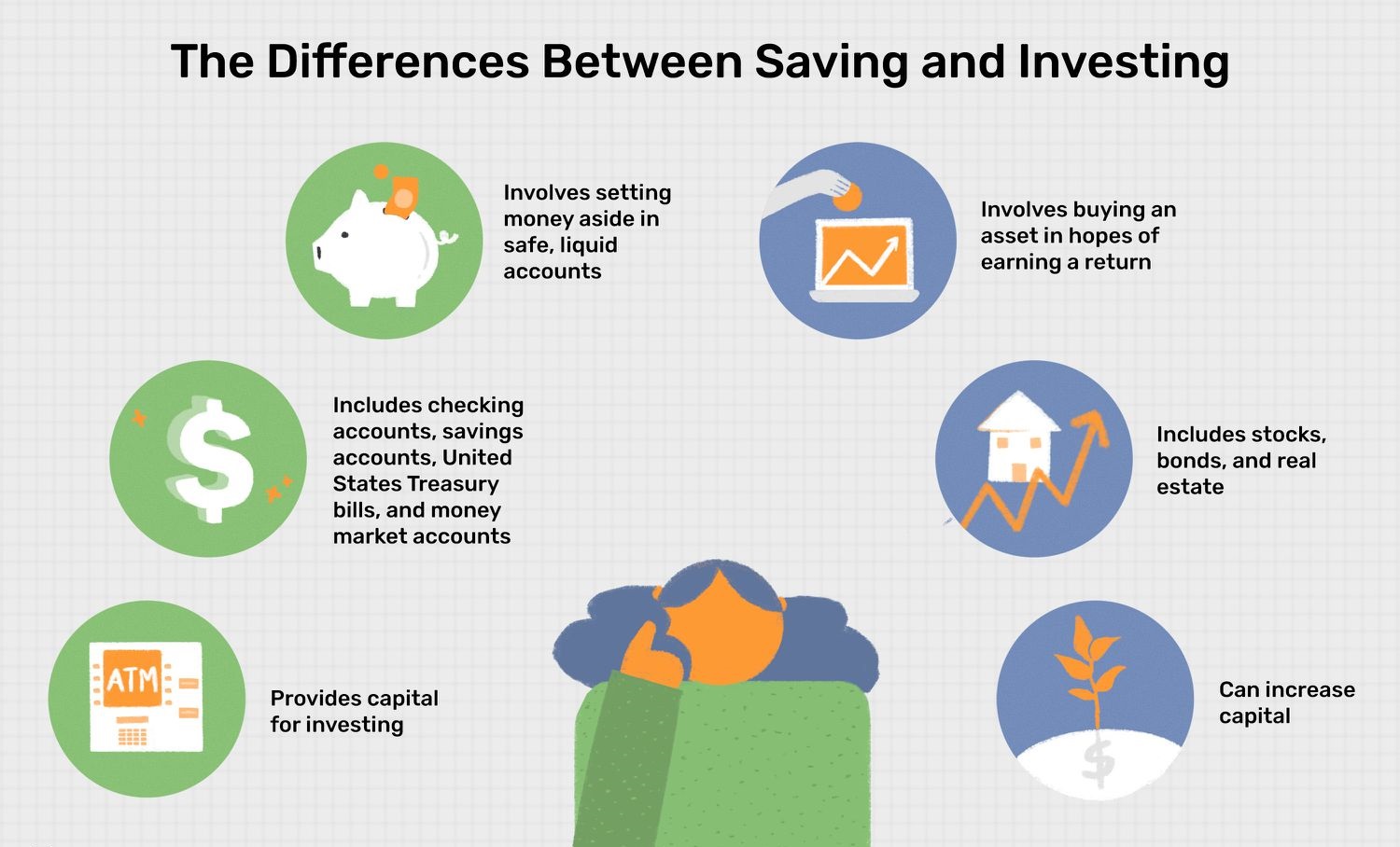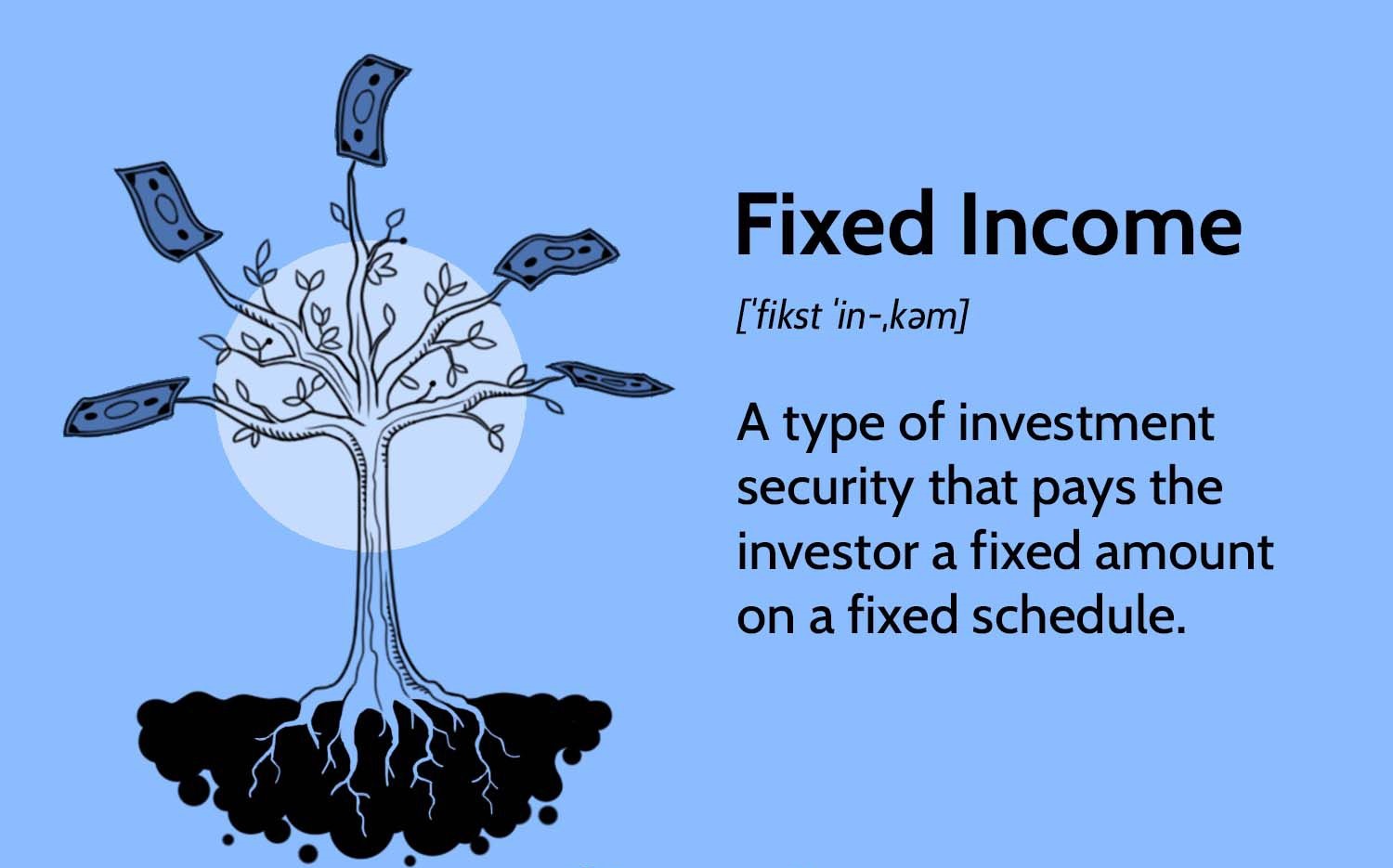Introduction
Welcome to our comprehensive guide on the types of investments that are most susceptible to interest rate risks. As an investor, understanding the impact of interest rate changes on various investment vehicles is crucial for making informed decisions and managing portfolio risks effectively.
Fluctuations in interest rates can have a significant influence on the performance and value of different investment options. When interest rates rise, the prices of certain investments tend to decline, while others may experience increased returns. Conversely, when interest rates fall, the reverse effect may occur. By being aware of which investments are more vulnerable to interest rate risks, you can navigate market conditions with greater confidence.
In this guide, we will explore different investment types and analyze their susceptibility to interest rate fluctuations. We will delve into the potential risks and rewards associated with each investment category, providing you with valuable insights to help you make more informed decisions in light of changing interest rate environments.
Please note that while this guide aims to provide valuable information and analysis, it is essential to consult with a financial advisor or conduct thorough research before making any investment decisions. The investment landscape is subject to complex and dynamic factors that may impact performance beyond interest rate changes alone.
Now, let’s begin our exploration of the various investment vehicles to better understand which types are most susceptible to interest rate risks.
Overview of Interest Rate Risks
Interest rate risk refers to the potential impact of changing interest rates on the value and performance of investments. It is essential for investors to understand this risk and its implications on their portfolio. When interest rates rise, the value of existing fixed-income securities tends to decrease, while newly-issued securities offer higher yields. Conversely, when interest rates fall, the value of existing fixed-income securities tends to increase, but newly-issued securities carry lower yields.
This risk affects various investment types to varying degrees. Bonds and fixed-income securities are more directly influenced by interest rate changes, given their fixed interest payments and maturity dates. Mortgage-backed securities, real estate investments, and corporate bonds and loans also face interest rate risks due to their sensitivity to borrowing costs and market dynamics influenced by interest rate fluctuations.
On the other hand, certain investments such as high dividend stocks, certificates of deposit (CDs), and savings accounts may be less exposed to interest rate risks. High dividend stocks can be more resilient in a rising interest rate environment due to their potential for strong earnings and dividend growth. CDs and savings accounts may also benefit from higher interest rates as they offer a guaranteed return.
It is important to note that interest rates are influenced by various factors such as economic conditions, inflation expectations, monetary policy decisions, and market sentiment. Therefore, predicting future interest rate movements accurately is challenging. However, by understanding the potential risks associated with different investment types, investors can make more informed decisions and adjust their portfolios accordingly.
In the following sections, we will delve into specific investment categories and analyze their susceptibility to interest rate risks. This will provide you with a comprehensive understanding of how different types of investments may be affected by interest rate fluctuations, allowing you to navigate the investment landscape with greater confidence.
Bonds and Fixed-Income Securities
Bonds and fixed-income securities are among the most susceptible investments to interest rate risks. These securities typically offer a fixed rate of interest over a specific period of time. When interest rates rise, the fixed interest payments on existing bonds become less attractive compared to newly-issued bonds with higher yields. As a result, the market value of existing bonds tends to decline.
The sensitivity of bond prices to interest rate changes is measured by a metric called duration. Bonds with longer durations are more vulnerable to interest rate fluctuations. For example, a bond with a duration of 10 years will experience a larger price decline when interest rates rise by 1% compared to a bond with a duration of 5 years.
Investors who hold individual bonds until maturity can mitigate interest rate risks, as they will receive the full face value of the bond upon maturity, regardless of market fluctuations. However, if an investor needs to sell a bond before maturity, they may incur a loss if interest rates have risen since the bond was purchased.
Bond funds, on the other hand, do not have a fixed maturity date. Instead, they hold a portfolio of bonds, and their net asset value (NAV) will fluctuate with changes in interest rates. When interest rates rise, the NAV of bond funds tends to decline. However, bond funds offer diversification and professional management, which can help investors navigate interest rate risks more effectively.
It is important to consider the credit quality of bonds as well. Higher-quality bonds, such as government bonds or those issued by highly-rated corporations, tend to be less impacted by interest rate changes compared to lower-quality or high-yield bonds. This is because higher-quality bonds are considered safer investments and typically have lower yields to compensate for this lower risk.
In summary, bonds and fixed-income securities are highly sensitive to interest rate changes. As interest rates rise, bond prices tend to decline, negatively impacting the value of existing bonds. Investors should carefully assess the duration of bonds and consider their investment horizon when allocating funds to fixed-income securities. Additionally, diversifying bond investments and choosing higher-quality bonds can help manage interest rate risks.
Mortgage-Backed Securities
Mortgage-backed securities (MBS) are financial instruments that are backed by a pool of mortgages. These securities are highly susceptible to interest rate risks due to their structure and the nature of mortgage loans. When interest rates rise, the demand for new mortgages typically decreases, leading to a decline in the supply of mortgage-backed securities. As a result, the prices of existing MBS may decrease.
The sensitivity of MBS to interest rate changes is affected by factors such as the level of prepayments and the average maturity of the underlying mortgages. If interest rates rise, homeowners are less likely to refinance their mortgages, which reduces prepayments. This can extend the duration of the MBS, making them more sensitive to interest rate fluctuations.
Conversely, when interest rates fall, homeowners may take advantage of lower rates to refinance their mortgages, leading to increased prepayments. This can decrease the duration of the MBS and potentially increase their market value.
Investing in MBS is a way for investors to gain exposure to the mortgage market without directly owning the underlying mortgages. However, it is important to note that the performance of MBS can be influenced not only by interest rate changes but also by factors such as the credit quality of the underlying mortgages and economic conditions.
Different types of MBS, such as agency-backed MBS and non-agency MBS, may exhibit varying levels of interest rate sensitivity. Agency-backed MBS, which are guaranteed or originated by government-sponsored entities like Fannie Mae and Freddie Mac, are generally considered more stable and have lower credit risk. Non-agency MBS, on the other hand, are not guaranteed by government entities and may have higher credit risk and price volatility.
Investors considering MBS should carefully assess the market conditions, interest rate environment, and credit quality before making investment decisions. It is also worth noting that MBS can be held through individual securities or through MBS-focused funds, which provide diversification and professional management.
In summary, mortgage-backed securities can be highly affected by interest rate changes. When interest rates rise, the prices of MBS may decrease, while falling interest rates can potentially increase the value of MBS. Investors should carefully analyze the factors that impact MBS performance and consider their risk tolerance and investment objectives before investing in these securities.
Real Estate Investments
Real estate investments, such as rental properties and real estate investment trusts (REITs), are also subject to interest rate risks. The real estate market is closely tied to borrowing costs and financing availability, both of which are directly influenced by interest rates.
When interest rates rise, the cost of borrowing to purchase real estate properties increases. This can lead to decreased demand for real estate investments, as potential buyers may find it more expensive to obtain financing. As a result, property prices may decline, impacting the value of existing real estate investments.
Furthermore, higher interest rates can have an impact on the profitability of rental properties. As financing costs increase, property owners may face higher mortgage payments, which can squeeze cash flow and reduce the profitability of rental income.
Similarly, REITs, which are investment vehicles that own and manage real estate properties, can be influenced by interest rate changes. When interest rates rise, the cost of borrowing for REITs may increase, limiting their ability to acquire new properties or refinance existing debt. This can ultimately affect the earnings and dividend payouts of REITs, potentially leading to a decline in their market value.
However, it is worth noting that real estate investments can also provide some insulation against inflation. Inflation often accompanies rising interest rates, and real estate investments have historically shown the ability to preserve and even increase in value during inflationary periods.
Investors considering real estate investments should carefully assess the prevailing interest rate environment and the local real estate market dynamics. Additionally, they should factor in the potential risks and rewards associated with owning and managing properties or investing in REITs. Diversification and a long-term investment horizon can also help mitigate interest rate risks.
In summary, real estate investments are impacted by changes in interest rates. Rising interest rates can lead to decreased demand, lower property prices, and potentially reduced profitability for rental properties and REITs. However, real estate investments also offer inflation protection and long-term growth potential. Investors should carefully analyze the market conditions, interest rate environment, and their investment objectives before committing to real estate investments.
Corporate Bonds and Loans
Corporate bonds and loans are another category of investments that are influenced by interest rate risks. Just like other fixed-income securities, these investments are subject to changes in interest rates, which can impact their market value and yield.
When interest rates rise, the borrowing costs for corporations increase. This can lead to higher yields on newly-issued corporate bonds and loans as investors demand higher compensation for the increased risk. As a result, the market value of existing corporate bonds may decline because their fixed interest payments become less attractive compared to the higher yields available in the market.
The credit quality of the corporate bonds and loans also plays a significant role in evaluating interest rate risks. Bonds and loans issued by companies with lower credit ratings or higher default risk are generally more sensitive to interest rate changes. Investors holding lower-rated corporate bonds may experience greater price volatility in response to interest rate movements.
On the other hand, companies with higher credit ratings may be less affected by interest rate changes. Investors perceive these bonds as safer investments due to lower default risk, which helps mitigate the impact of interest rate fluctuations on their market value.
It’s important to note that the duration of corporate bonds and loans can also influence their sensitivity to interest rates. Longer-term bonds or loans typically exhibit greater price volatility compared to those with shorter maturities when interest rates change.
Investors interested in corporate bonds and loans should consider the prevailing interest rate environment, credit quality, and maturity profile of the securities. Diversification across issuers, industries, and credit ratings can help mitigate the risks associated with interest rate fluctuations. Additionally, proper due diligence and credit analysis are crucial for evaluating the creditworthiness of the issuing companies.
In summary, corporate bonds and loans are subject to interest rate risks. Rising interest rates can lead to decreased demand, higher yields on newly-issued securities, and potentially lower market values for existing bonds. Factors such as credit quality and duration further affect the sensitivity of these investments to interest rate changes. Investors should carefully analyze these factors and seek professional advice before making investment decisions in corporate bonds and loans.
High Dividend Stocks
High dividend stocks are a type of equity investment that can provide regular income through dividend payments. While they are generally considered less susceptible to interest rate risks compared to fixed-income securities, they can still be influenced by changes in interest rates.
When interest rates rise, high dividend stocks may face increased competition from fixed-income investments that offer higher yields. This can make the dividend yield of stocks relatively less attractive, leading to a decline in their market value. Investors seeking higher income may redirect their investments from stocks to bonds or other fixed-income assets.
However, it’s important to note that high dividend stocks can often have other factors that contribute to their appeal, such as strong earnings growth potential, solid company fundamentals, and dividend growth over time. These factors can help offset the impact of rising interest rates to some extent.
Furthermore, high dividend stocks may also be more resilient in a rising interest rate environment due to their potential for strong earnings growth. Companies that consistently generate substantial earnings can continue to provide attractive dividend payments even as interest rates increase.
Investors considering high dividend stocks should carefully assess the underlying fundamentals of the companies, including their dividend payout ratios, earnings stability, and growth prospects. Diversification across different sectors and careful stock selection can help mitigate the risks associated with interest rate fluctuations.
It’s worth noting that dividend payments are not guaranteed, and companies can reduce or suspend dividends at any time. Therefore, investors should conduct thorough research and due diligence before investing in high dividend stocks and understand that the value of stocks can fluctuate based on various market factors, not just interest rates.
In summary, while high dividend stocks can be influenced by changes in interest rates, their performance is also shaped by other factors such as company earnings, growth prospects, and overall market conditions. Investors should consider these factors carefully and focus on companies with strong fundamentals and the ability to sustain dividend payments over the long term.
Certificates of Deposit (CDs) and Savings Accounts
Certificates of Deposit (CDs) and savings accounts are commonly known as low-risk investments that offer a fixed interest rate. They are considered to be less susceptible to interest rate risks compared to other investment options.
When interest rates rise, the yields on newly-issued CDs and savings accounts tend to increase, providing investors with the opportunity to earn higher returns. However, existing CDs locked in at lower rates may become less attractive compared to the higher rates available in the market.
On the other hand, when interest rates fall, the yields on newly-issued CDs and savings accounts may decrease, potentially reducing future returns for investors. However, existing CDs will continue to earn the fixed interest rate agreed upon at the time of purchase, making them relatively more attractive in a low-interest rate environment.
CDs and savings accounts are typically offered by banks or credit unions and are insured by the Federal Deposit Insurance Corporation (FDIC) or the National Credit Union Administration (NCUA). This insurance helps protect investors’ principal and interest payments, adding an additional layer of stability and reassurance.
One advantage of CDs and savings accounts is their high liquidity. While the funds are locked in for a specific term in the case of CDs, savings accounts allow for easy access to the money without penalties. This flexibility can be beneficial for investors who may need to access their funds quickly or in case of emergencies.
However, it’s important to note that CDs and savings accounts often offer lower yields compared to other investment options such as stocks or bonds. Their main attraction lies in their safety and stability rather than high returns. Additionally, the interest earned on these accounts is subject to taxation.
In summary, CDs and savings accounts are less susceptible to interest rate risks compared to other investments. When interest rates rise, new CDs and savings accounts offer higher returns, while existing accounts may become relatively less attractive. Conversely, in a falling interest rate environment, new accounts may offer lower yields, but existing accounts can continue to earn the agreed-upon fixed interest rate. Investors seeking low-risk and easily accessible options may consider allocating a portion of their portfolio to CDs and savings accounts.
Emerging Market Investments
Emerging market investments refer to investments in the securities and assets of developing countries with growing economies and potential for high returns. These investments can be influenced by a range of factors, including interest rate risks.
When interest rates rise, emerging market investments may experience increased volatility. Higher interest rates can lead to capital outflows from emerging markets as investors seek higher yields in more developed economies. This can put downward pressure on the currencies of these countries and negatively impact the performance of emerging market securities, such as stocks and bonds.
Furthermore, emerging market countries often have higher borrowing costs due to perceived higher risks, making them more sensitive to changes in global interest rates. Raising interest rates in developed countries can lead to tighter global financial conditions, making it more challenging for emerging economies to access external financing and potentially slowing their economic growth.
Conversely, when interest rates fall, emerging market investments may benefit from increased capital flows seeking higher yields. Lower interest rates in developed countries can spur investor appetite for emerging market securities, boosting their prices and potentially providing higher returns.
It’s important to note that investing in emerging markets comes with higher risks, including political instability, economic volatility, and less-developed regulatory frameworks. These factors can amplify the impact of interest rate changes on emerging market investments.
Investors considering emerging market investments should carefully assess the economic and political stability of the countries they are investing in, as well as the potential risks and rewards. Diversification across multiple emerging market economies can help mitigate the concentration risk associated with these investments.
Additionally, investors should be prepared for higher levels of volatility and be patient, as emerging market investments may require a longer investment horizon to realize their potential returns. Regular monitoring and staying informed about global economic trends and interest rate developments can also help investors navigate the risks associated with emerging market investments.
In summary, emerging market investments can be influenced by interest rate risks. Rising interest rates can lead to capital outflows and currency depreciation, while declining interest rates can attract capital inflows and potentially boost returns. However, due to the higher risks associated with emerging markets, investors should approach these investments with caution and conduct thorough research and analysis before making investment decisions.
Conclusion
In conclusion, understanding the potential impact of interest rate risks on different types of investments is crucial for investors. Changes in interest rates can have significant implications for the performance and value of various investment vehicles.
Bonds and fixed-income securities are highly sensitive to interest rate changes, with longer-duration bonds being more vulnerable. Mortgage-backed securities are influenced by borrowing costs and the level of prepayments in the mortgage market. Real estate investments, such as rental properties and REITs, are tied to borrowing costs and can be impacted by rising interest rates. Corporate bonds and loans may experience changes in market value as borrowing costs for companies fluctuate. High dividend stocks can be resilient but may face competition from fixed-income investments when interest rates rise. CDs and savings accounts offer stability and lower risk but their yields may be impacted by interest rate movements. Finally, emerging market investments are subject to volatility, with interest rate changes affecting capital flows and currency values.
It is important for investors to carefully assess the risks and rewards associated with each investment type and consider their own investment goals, risk tolerance, and time horizon. Diversification across multiple asset classes and thorough research on market conditions and credit quality are vital for managing interest rate risks effectively.
It is worth noting that the impact of interest rate change on investments is not always straightforward and can be influenced by various other factors, including economic conditions, inflation, and market sentiment. Therefore, staying informed, consulting with financial professionals, and keeping a long-term perspective are essential for making informed investment decisions in the face of interest rate risks.
While interest rate risks are an important consideration, they should not be the sole determinant of investment decisions. Each investor’s unique circumstances and financial objectives should guide their investment strategy. By understanding and managing interest rate risks, investors can navigate changing market conditions while maximizing their potential for long-term growth and financial success.







